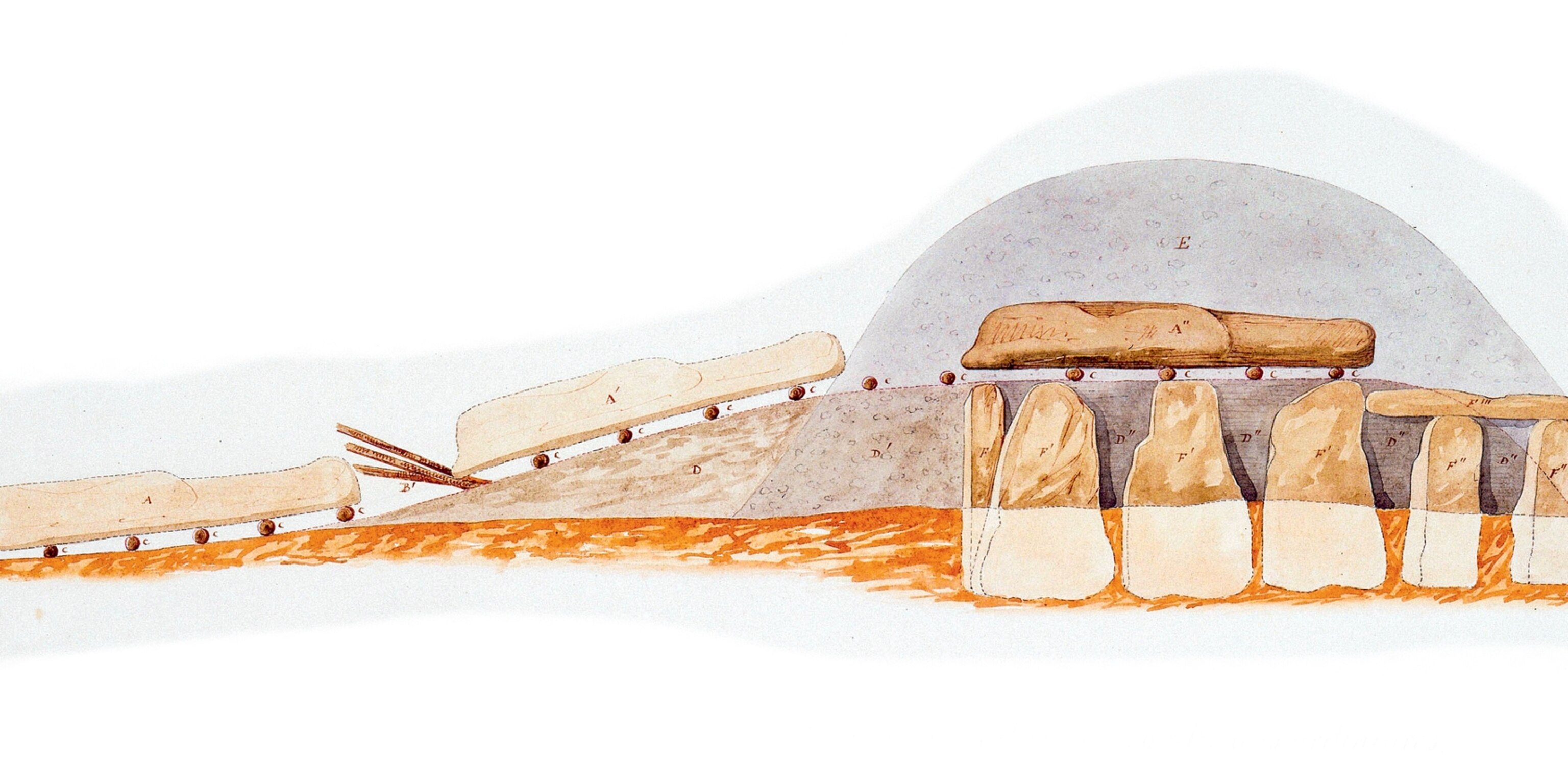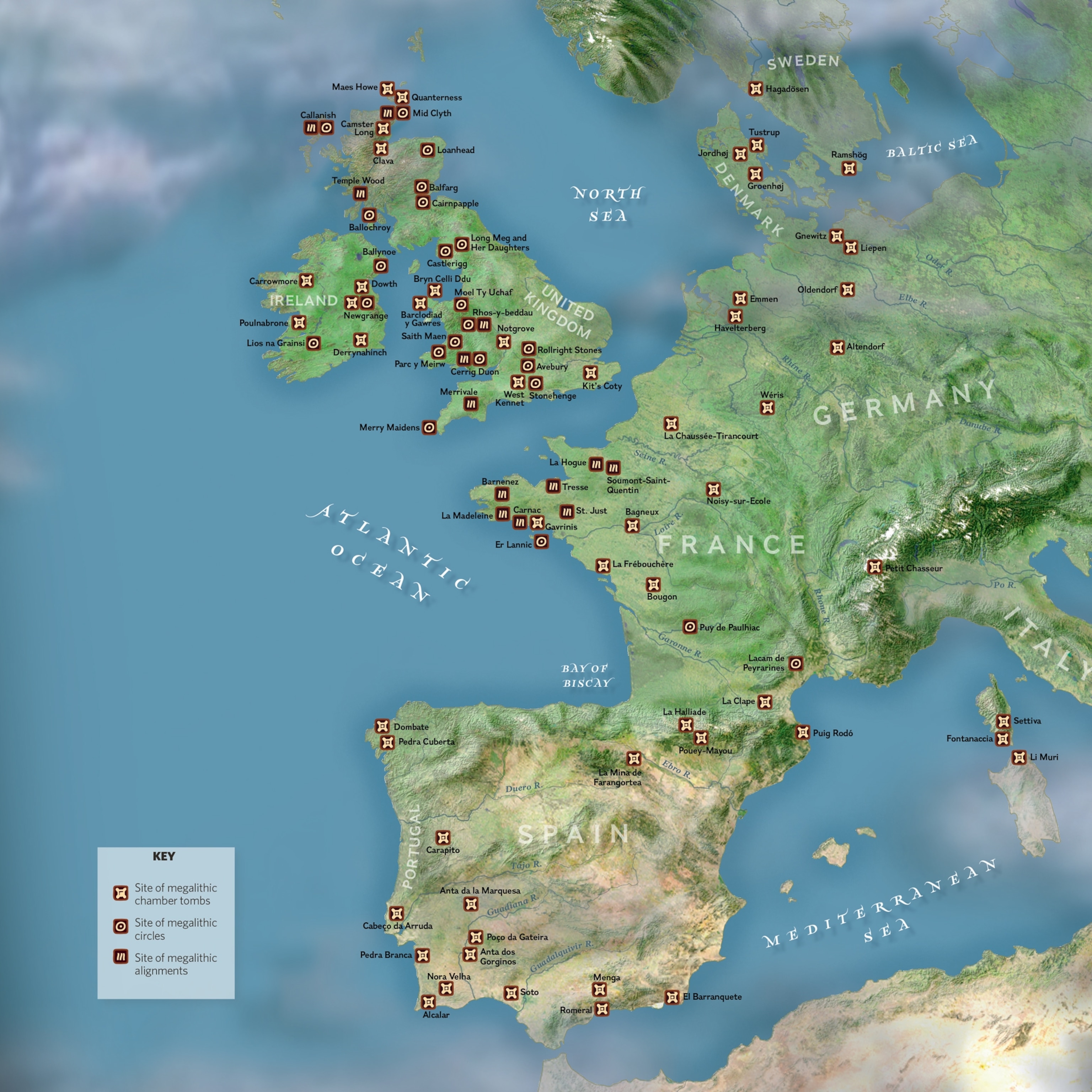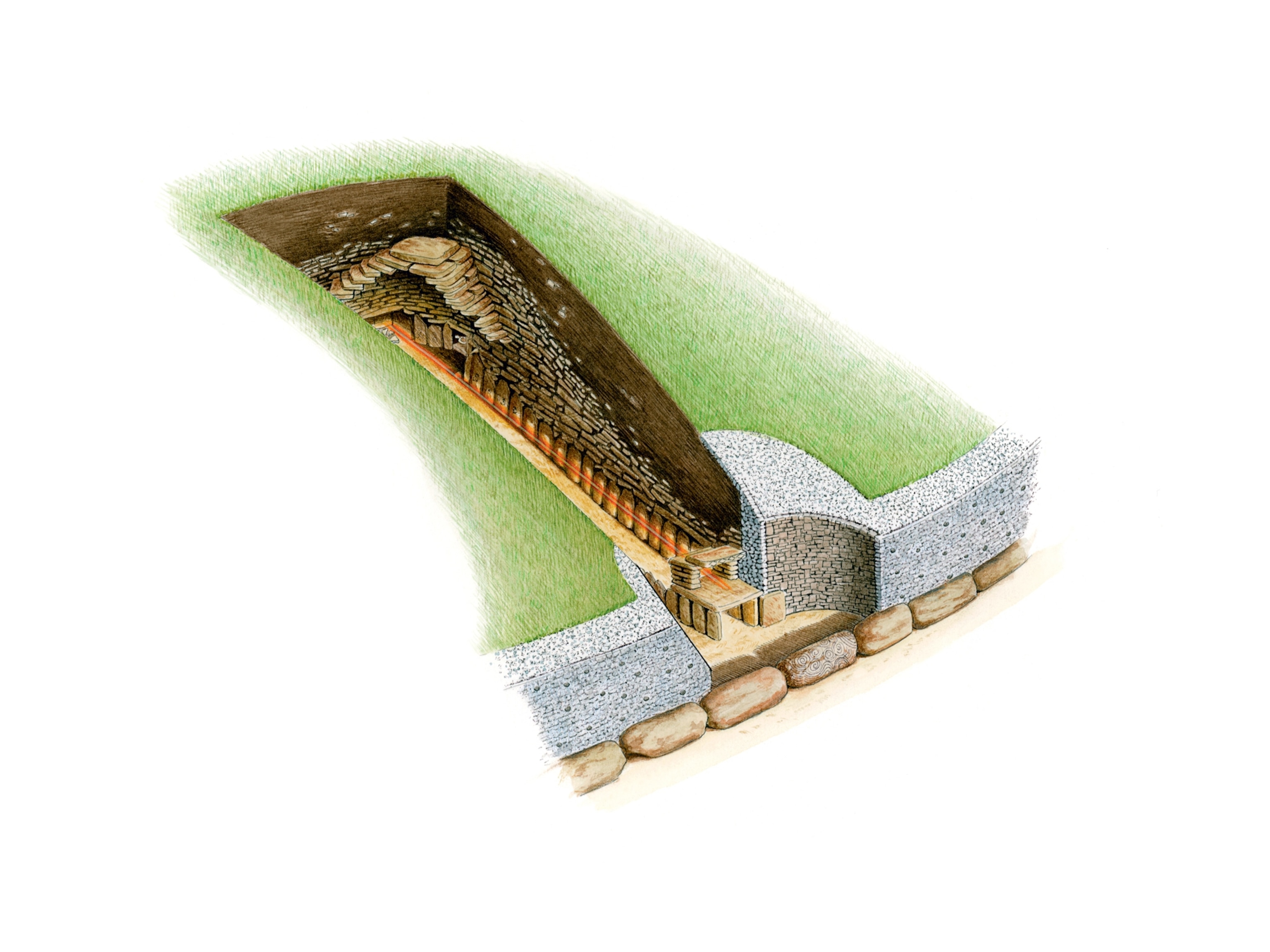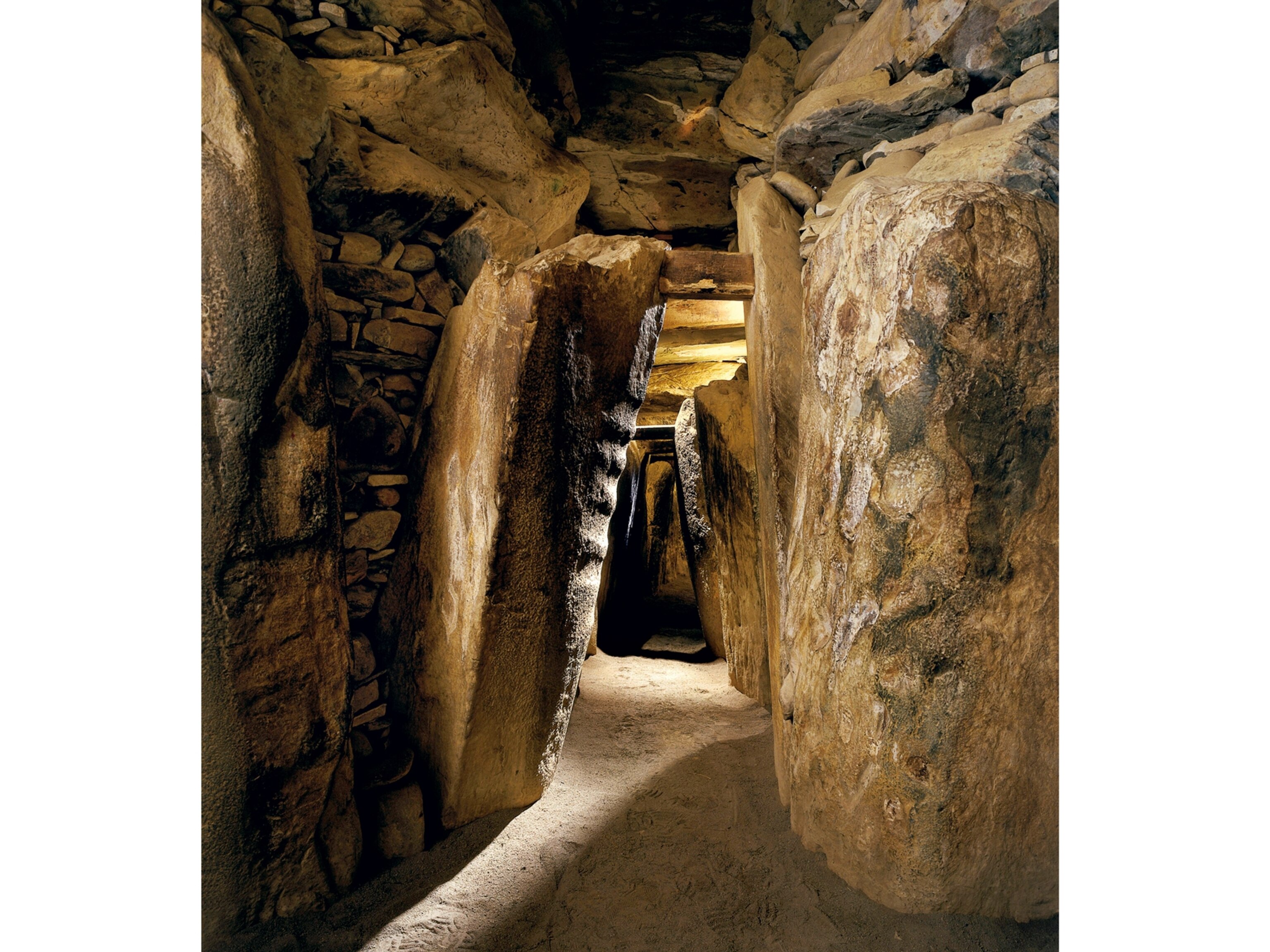
Europe’s Mighty Megaliths "Rock" the Winter Solstice
Dating back thousands of years, Europe’s massive stone monuments aligned ancient peoples with the heavens above.
Megaliths are the most visible remnants of a European past that otherwise seems unimaginably remote. These massive stone structures, dating back more than 6,000 years, have never failed to capture the imagination of those who encounter them—from the Neolithic farmers who first conceived them to modern archaeologists now shedding light on the origins and purposes of these formidable monuments.
Every age interprets megaliths in its own way. In the Middle Ages they were seen as the work of Greek giants. The antiquarians of the 18th and 19th centuries assumed they had been erected by invading forces of Romans, Goths, or Huns.
It was a British antiquarian, Algernon Herbert, who in 1849 used the term megalith for the first time, derived from the Greek words megas, large, and lithos, stone. In the 20th century, as archaeology and scientific techniques developed, it was possible to shed light on at least some of the mysteries surrounding these silent stone titans.
Experts now believe that megaliths stood at the very heart of ritual practice for the networks of communities scattered across western Europe later in the new Stone Age, or Neolithic period, that had begun around 10,000 B.C. Their function was both earthly and celestial: a focus for rites concerning the movement of the heavenly bodies across the skies, a memorial to the community’s ancestors, and an awe-inspiring site to cement local loyalty and solidarity. (See also: When Is the First Day of Winter? December Solstice 2017 Explained.)
Europe's Temples of Rock






Rock On
European megaliths usually fall into three main categories. First came the solitary standing stone or menhir. The term “menhir” derives from words in Welsh and Breton used for stone (maen) and long (hir). Menhirs began to appear around 4500 B.C. in areas all over western Europe and ranged in height from three to 20 feet.
The second type of megalithic structure is a grouping of several menhirs, which were arranged in lines (alignments) or in circles. Spread across several sites in northern France, the Carnac Stones are alignment menhirs with more than 3,000 stone monuments dating as far back as 3300 B.C. Stonehenge, perhaps the world’s most famous megalith, is a circular grouping. Located in Salisbury Plain, England, Stonehenge was built in several phases, beginning in 3000 B.C.
The third category includes tombs, which appeared in France, Great Britain, Ireland, and the Iberian Peninsula around 4000 B.C. The most common was the dolmen, a simple structure consisting of upright stones supporting a flat slab of rock, creating a single chamber underneath.
More complex tombs were also built, some of which included passages and multiple rooms. These spaces were often hidden inside a mound of earth, a cairn of stones, or a tumulus formed of both earth and stones. Sometimes several tombs of this type were grouped around a larger focal point to form megalithic cemeteries.
Stone Temple Pilot Programs

Europe’s megaliths have one big thing in common: heavy rocks. How heavy were they? Just one of the many slabs of the Dolmen of Menga in Spain weighs 65 U.S. tons. A typical structure was built of standing stones, known as orthostats, with large slabs laid across the top. There are several theories on how they were put into place. One possibility is that builders first marked the outline of the monument on the ground. Next they dug a deep hole for each standing stone. Then they laid the orthostats on rollers (as seen in this French illustration from 1865, the year the term "Neolithic" was coined) and moved them to the hole’s edge. There, each could be eased upright as wooden levers pushed from behind and teams of men pulled from the front with ropes. The stones for the top were then hauled up a temporary earthen ramp.
It was on Europe’s Atlantic coast that another distinctive structure appeared: the passage grave. This type of tomb consisted of a tumulus made of soil or stone, inside which a long narrow passageway led to a funerary chamber. New rites associated with these installations also emerged, and different communities appear to have developed similar approaches to the structures. From early on, the megaliths in the Atlantic region presented common elements, ranging from design, construction techniques, orientation, and the symbols carved into the stone’s surface.
Archaeologist Glyn Daniel estimated that in Atlantic Europe—the British Isles, Galicia in northern Spain, Portugal, and Brittany in France—between 40,000 and 50,000 such chambers have been preserved, although originally there may have been double this number. These burial places would have occupied dominant positions in the landscape, along the coasts, on promontories or the crests of hills.
Settling Down, Rising Up

The appearance of megalithic structures in Europe tracks with the development of agriculture. From the middle of the fifth millennium B.C. the emerging Neolithic communities of Europe began to radically transform their environment. They cut down swaths of forest to grow crops and graze their flocks. They left behind the old nomadic ways of the hunter-gatherer and settled where they were growing food. It was these first agrarian communities that created the impressive megalithic landscapes of Europe.
Why did the establishment of agricultural activity coincide with the creation of megalithic monuments? Unlike the nomadic huntergatherer model of survival, agriculture entailed a permanent relationship with a specific location: the land cultivated for crops, the pasture land, and the settlement itself. Constructing a megalithic structure placed a powerful visible mark of a community’s ownership of, and relationship with, the portion of land that they worked. The act of constructing the vast monuments would have further reinforced the bonds among members of the community as well as legitimizing their claim to a particular place.
An increasing number of people needed to cooperate with one another. It was vital to have enough laborers to till the fields, tend the flocks, and harvest the crops. This need for collaborative work brought about the formation of ever wider networks of people unconnected by blood ties. Within this framework, there arose a system of governance that further united the community by establishing sanctions and punishments to ensure the necessary cooperation from all members of the community.
Megaliths also demonstrated how the economic aspect of agriculture could lead to the development of religion. Thanks to agriculture, communities could produce surplus food, which created a class of people who, freed from food-production duties, could dedicate themselves to leadership and protection of the community through ritual practices. So it was out of this context that the megalith was born: a combination of a closer cooperation, the need to consecrate links with the earth on which the community relied, and the emergence of group members dedicated to ritual practices.
Heaven and Earth
Shiny and New

John Lubbock coined the term “Neolithic” in 1865. Meaning “new stone,” it alludes to the period in which stone was polished, giving it a more refined finish than in the Paleolithic era. The technique is clearly visible on these ax heads, dating from 4000 B.C. to 2200 B.C.
Many megaliths have been identified as the focal point for funerary rituals, especially, of course, structures found to house human remains. The tombs—some of which have been found to contain the cremated or buried remains of up to 200 people—suggest a group effort was made to create a connection between the deceased and the land where they lived.
It is also believed that these burials reflect a hierarchical society in which important members of the community were buried in tombs while lesser members were not. If so, power would have been seen as hereditary; blood links to ancestors would have provided certain members of the community with power over both the physical world as well as the world of the dead. The imposing presence of the passage graves would have reinforced still further the social differences between the strata of these early agrarian communities.
It was no coincidence that many megalithic tombs were constructed in locations that are ideal for observing the solstices, equinoxes, or the cycles of the moon. The remarkable Newgrange passage grave in Ireland, built around 3200 B.C., is one of the most famous examples. Over the entrance there is a cavity, angled very precisely so that light reaches the chamber on the shortest day of the year in Europe: the winter solstice, in mid-December. Now, as then, as day dawns from December 19 through 21, light penetrates this aperture and illuminates the entire length of the passage for 15 to 20 minutes each morning.
The incorporation of astronomical alignments suggests that Neolithic ceremonies were closely bound with the changing seasons. These cycles were critical to agrarian communities, whose leaders would benefit from this essential knowledge. It is also possible that the ability to accurately predict dramatic events such as solar eclipses would have significantly bolstered the power and prestige of those leaders.
Sights and Sounds
A New Look at Newgrange



As megalithic tombs became more complex, they also grew more decorative, incorporating carved motifs and colors. Scholars such as Primitiva Bueno Ramírez suggest that a good number of these constructions in western Europe may have been decorated with pigments, especially red, black, and white. These three colors are present in the inherent makeup of the monuments: the red of the sandstone, the white of the granite or quartz, and the black of the darkness that reigns in the interior chambers.
Researchers Aaron Watson and David Keating focus on a different sensory dimension. They examine various acoustic phenomena associated with the megalithic chambers and demonstrate that when a drum is beaten inside the structure, it produces a series of unusual sensations related to infrasounds—i.e., sound waves below the frequency of audible range. In nature these are generated by events such as volcanic eruptions, avalanches, or earthquakes. A study was carried out to test the effect of these sounds on the people listening. It was noted that the pulse and breathing patterns of participants in the study altered. This raises the possibility that a prolonged exposure to such sounds could have led to hyperventilation—fast breathing that causes a sense of excitement.
Senses and the Spirit
With the Grain

Archaeological evidence shows that Europe’s Neolithic farmers grew a variety of crops, including wheat and barley. They developed tools such as this grindstone to turn grains into flour.
The best way to understand the impact of these tombs is to try to get inside the mind of a Neolithic farmer. What would he or she have thought on encountering such a monumental structure?
It must have been a powerful focal point on the landscape, visible even from a distance, especially given the prominent places where megaliths tended to be placed. As they drew nearer to the monument, its sheer size must have been overwhelming. The entrances to some tombs were also impressive, decorated with carved symbols, and vibrant painted colors. But the most awesome moment of all must surely have come on venturing inside the cool, dark space of the tomb, reaching the funerary chamber in the presence of the ancestors.
British archaeologist Julian Thomas argues that a key factor in the design of megalithic structures was precisely to provoke a powerful emotional reaction. The architecture of the passage dictated a pattern of movements that affected all the senses simultaneously. The first steps took people into a dark internal chamber. Ducking their heads down, they then made their way slowly down the long, dark passage. With little natural light, they probably placed their hands on the walls for guidance, all the while sensing the curved forms of the carvings under their fingertips and the sounds of ritual vibrating through their body. At the tunnel’s end, they might have needed to crouch down even more to enter the funerary chamber itself. All the elements combined to give a dramatic, physical sense of entering the rarefied domain of the ancestors.
The association of the megalithic monoliths with astronomical events, colors, and sounds suggests that they were more than burial places. It is likely that they were also ritual areas where preachers would have spoken, formulated astronomical predictions, and used distinctive symbols and evocative colors. It seems that the physical architecture of these monuments, when combined with these rituals, would help provoke specific physical and mental reactions and would add to the community members’ sense of awe, consolidating their loyalty to the societies to which they belonged, and preserving the memory of former leaders who had died.
Related Topics
You May Also Like
Go Further
Animals
- How scientists are piecing together a sperm whale ‘alphabet’How scientists are piecing together a sperm whale ‘alphabet’
- Orangutan seen using plants to heal wound for first timeOrangutan seen using plants to heal wound for first time
- What La Palma's 'lava tubes' tell us about life on other planetsWhat La Palma's 'lava tubes' tell us about life on other planets
- This fungus turns cicadas into zombies who procreate—then dieThis fungus turns cicadas into zombies who procreate—then die
Environment
- The northernmost flower living at the top of the worldThe northernmost flower living at the top of the world
- This floating flower is beautiful—but it's wreaking havoc on NigeriaThis floating flower is beautiful—but it's wreaking havoc on Nigeria
- What the Aral Sea might teach us about life after disasterWhat the Aral Sea might teach us about life after disaster
- What La Palma's 'lava tubes' tell us about life on other planetsWhat La Palma's 'lava tubes' tell us about life on other planets
- How fungi form ‘fairy rings’ and inspire superstitionsHow fungi form ‘fairy rings’ and inspire superstitions
- Your favorite foods may not taste the same in the future. Here's why.Your favorite foods may not taste the same in the future. Here's why.
History & Culture
- These were the real rules of courtship in the ‘Bridgerton’ eraThese were the real rules of courtship in the ‘Bridgerton’ era
- A short history of the Met Gala and its iconic looksA short history of the Met Gala and its iconic looks
- Meet the ruthless king who unified the Kingdom of Hawai'iMeet the ruthless king who unified the Kingdom of Hawai'i
Science
- Why trigger points cause so much pain—and how you can relieve itWhy trigger points cause so much pain—and how you can relieve it
- Why ovaries are so crucial to women’s health and longevityWhy ovaries are so crucial to women’s health and longevity
Travel
- What it's like trekking with the Bedouin on Egypt's Sinai TrailWhat it's like trekking with the Bedouin on Egypt's Sinai Trail







